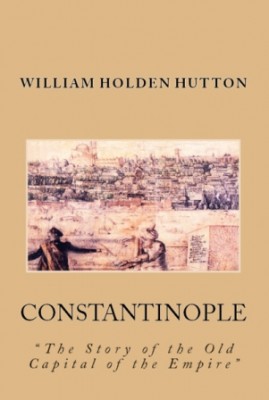More Search Results...
William Holden Hutton (1860 – 1930) was a British historian and a presbyter of the Church of England. He was Dean of Winchester Cathedral from 1919 to 1930. William Holden Hutton was born in Britain on 24 May 1860, in Lincolnshire, where his father was rector of Gate Burton. He studied at [[Magdalen College, Oxford]], where he graduated with a first class degree in modern history in 1881.
He was a Fellow at St John’s College, Oxford, from 1884 to 1923, and an honorary Fellow thereafter; and from 1889 to 1909 was a tutor at the College. in 1903 he delivered the Bampton lectures. Between 1895 and 1897 he also lectured on Church history at Cambridge University. During this period he had a house at Burford; and he wrote about Burford and the Cotswolds in some of his books. In 1911 at the prompting of bishop Carr Glyn of Peterborough he began serving as Archdeacon of Northampton, and Canon Residentiary of Peterborough Cathedral. During this period he revisited Oxford as a University reader in Indian history. He found that the climate at Peterborough was not good for his health. From 1919 he accepted the deanery of Winchester cathedral, with a house suitable for his large library. His continuing ill-health did not prevent him from being a ready host.
He was also a generous helper to the young. He wrote several historical works, chiefly on the Church in Britain, and was also a copious reviewer. He also authored the biography of Richard Wellesley (1893) for the Rulers of India series.
Constantinople: “The Story of the Old Capital of the Empire”
"Where ocean bathes earth's footstool these sea-bowers
Bedeck its solid wavelets: wise was he
Who blended shore with deep, with seaweed flowers,
And Naiads' rivulets with Nereids' sea."
Strictly speaking the peninsula on which the city stands is of the form of a trapezium. It juts out into the sea, beating back as it were the fierce waves of the Bosphorus, and forcing them to turn aside from their straight course and widen into the Sea of Marmora, which the ancients called the Propontis, narrowing again as it forces its way between the near banks of the Hellespont, which rise abrupt and arid from the European side, and slope gently away in Asia to the foot of Mount Ida. Northwards there is the little bay of the Golden Horn, an arm as it were of the Bosphorus, into which run the streams which the Turks call the Sweet Waters of Europe. The mouth of the harbour is no more than five hundred yards across. The Greeks of the Empire spanned it by a chain, supported here and there on wooden piles, fragments of which still remain in the Armoury that was once the church of S. Irene. Within is safe anchorage in one of the finest harbours of the world.

































